Since his arrival back in July 2011, Sergio Agüero has scored at least 20 goals in every season for Manchester City except the 2012/13 campaign.
Agüero currently has 23 goals this season before football stopped due to the worldwide pandemic.
However, the Argentine will be 32 years old this summer.
A decline in performance surely will be around the corner and the Citizens need to find a replacement immediately.
Luckily, City don’t have to look further.
They have Gabriel Jesus, who they signed from Palmeiras in early 2017.
The 23-year-old Brazilian is currently knocking on Pep Guardiola’s door to be his main option as City’s centre-forward.
The question is, is he good enough?
This tactical analysis will inform you about G. Jesus’ role and impact on the Citizens.
Gabriel Jesus Style Of Play
G. Jesus is originally a centre-forward.
This season, he has scored 18 goals and made nine assists in just 39 matches for City.
Since he came from Palmeiras, G.
Jesus has played 139 games for the Citizens.
From all those games, the recently turned 23-year-old has managed to score 63 goals and made 25 assists.
Per the statistics, that’s equal to 0.63 goal contributions every game.
The Brazilian can also play as a winger, particularly on the left flank.
This season
, he has played six games as a left-winger, including one against Real Madrid in the Champions League’sknockout round.
Usually, he will play in this position when Guardiola starts him and Agüero together.
This versatility is important as the manager likes to make experiment with his tactics.
Gabriel Jesus – Stay central
Pep Guardiola’s manager style insists that G. Jesus stay in his position when City have the ball.
By staying central, G. Jesus would pin the opponents’ centre-backs with him all the time.
This would give City an advantage.
That advantage is an open space in between the lines since the centre-backs would most likely stay with G. Jesus and not move forward.

The space between the lines can then be filled with City’s advanced midfielder(s) and/or inverted winger(s).
Guardiola’s centre-backs or deeper midfielder(s) would then be tasked with finding their teammates between the lines with a vertical pass.
In that area, they can combine relatively easily and continue City’s attacks.
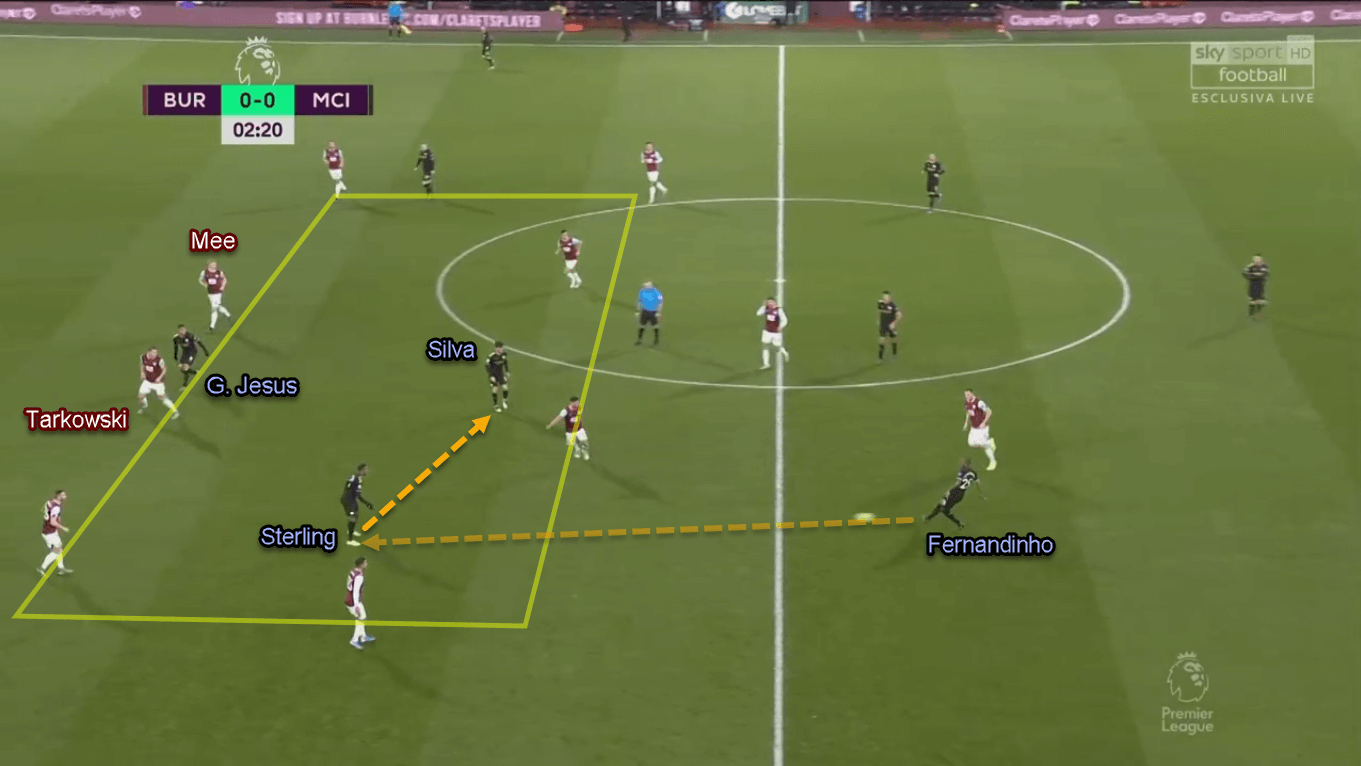
The Brazilian’s tendency to stay centrally can also be found even when he’s playing as a left-winger.
When playing there, G. Jesus would tuck inside and play inside the half-space.
The width then will be provided by City’s marauding left-back.
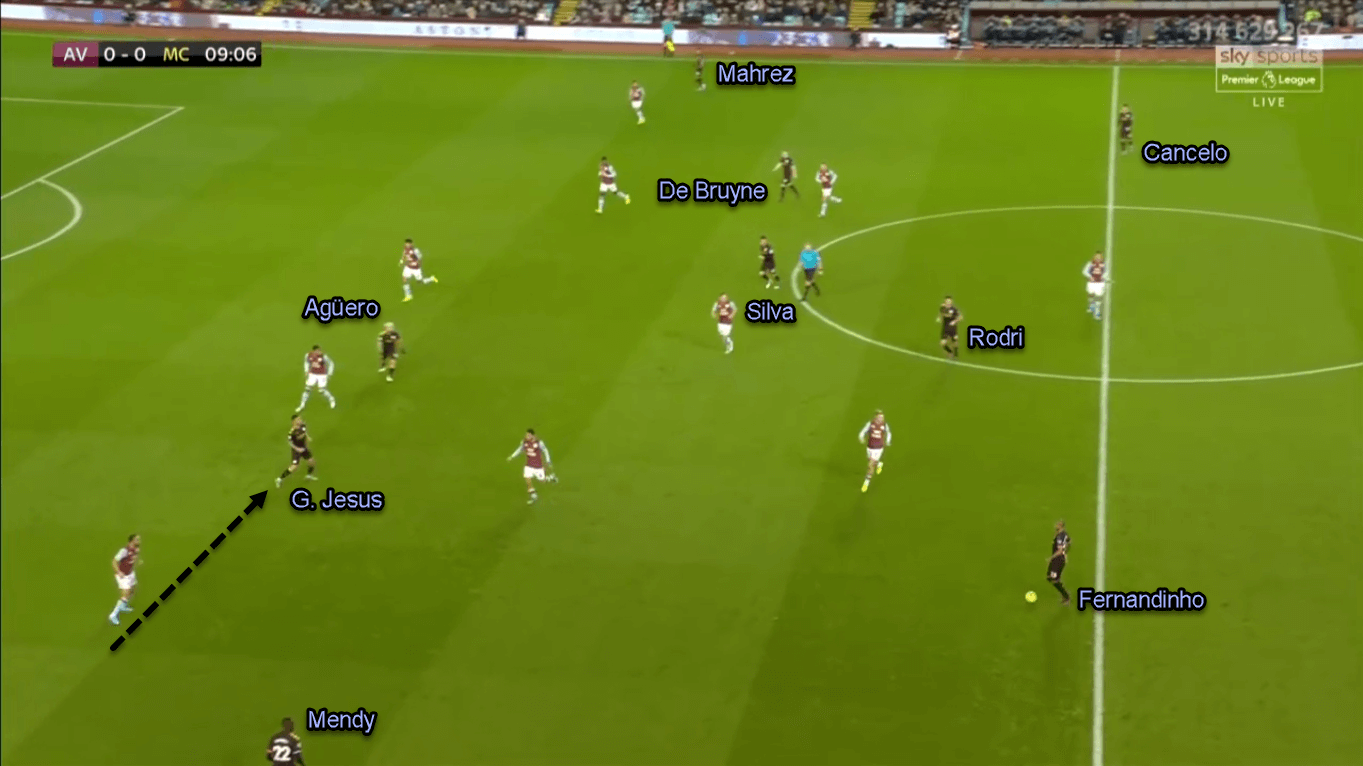
As mentioned previously in this scout report, G. Jesus would likely play as a winger when he and Agüero start together.
However, they can rotate their positions quite often to disrupt the opponents’ defensive department.
The reason behind this is Agüero’s tendency to drop next to the midfielders and combine with them.
When he does this, G. Jesus comes central, fills the Argentine’s position, and pins the backline.
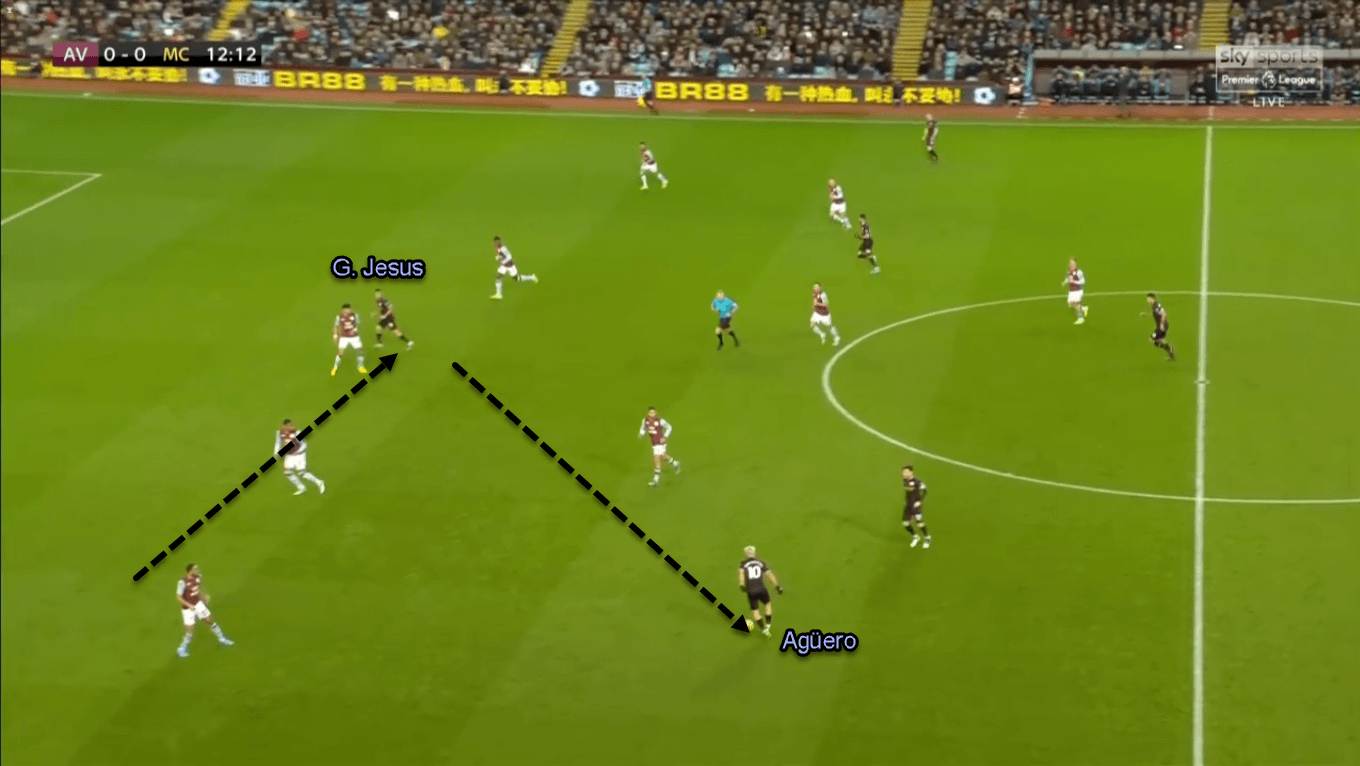
Gabriel Jesus Attacking tendencies (Part One)
His tendency to stay in parallel with the opponents’ centre-backs gives him another advantage.
In the final third, G. Jesus likes to make runs in behind the defensive line; between opponents’ defenders.
Making runs in the channel would confuse G. Jesus’ markers on who to follow his run.
In addition, starting in line with the defenders will give him a positional advantage, allowing him to make such runs.
Yet, the backline’s headache doesn’t stop there.
G. Jesus is blessed with superb acceleration and speed to execute penetrating runs.
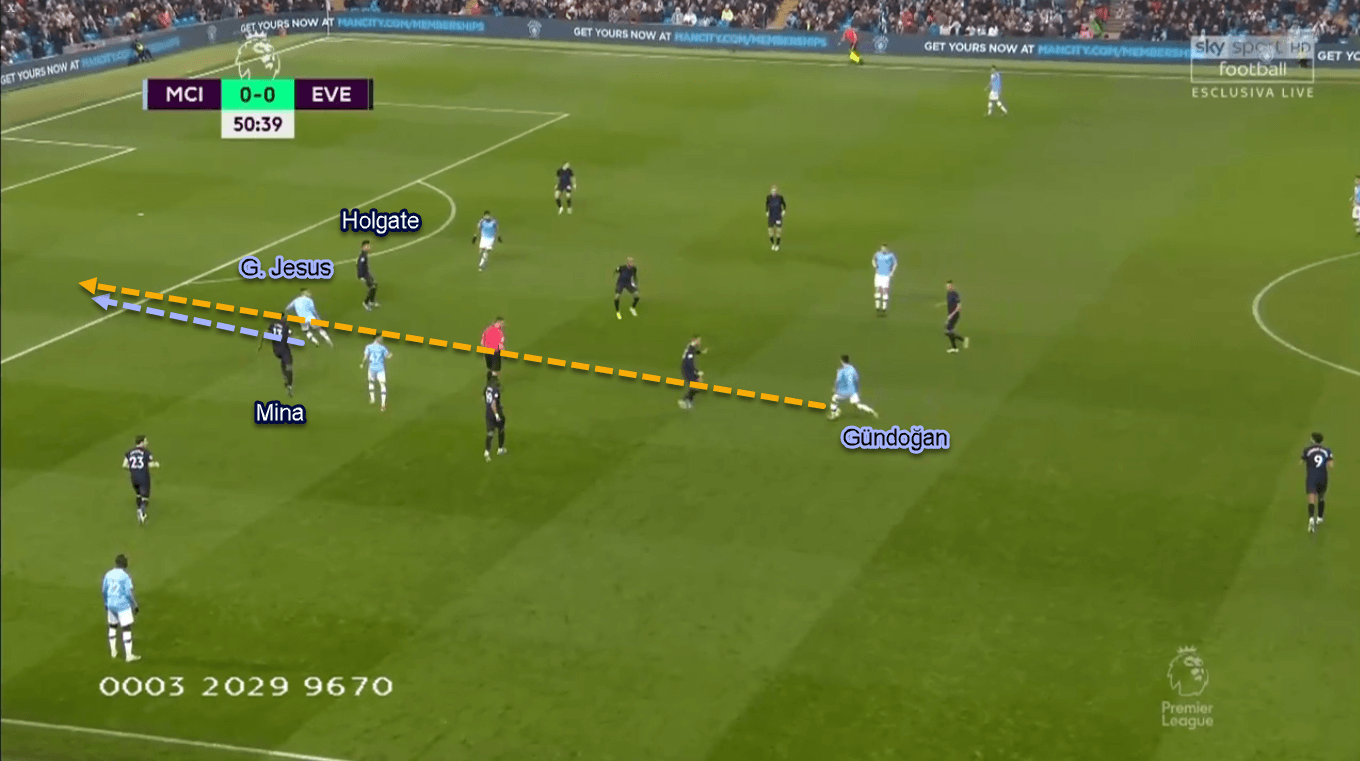
G. Jesus’ desire to make runs in behind gives his marker(s) more issues.
If they let him run, the Brazilian would arrive in the dangerous area easily.
But if they follow him, a gap will open inside their defensive block, enlarging the space between the lines.
That gap then can be attacked by one of G. Jesus’ attacking comrades.
They can exploit it by running and receiving the ball from G. Jesus’ lay-off pass or by driving with the ball and then making a goal-scoring attempt.
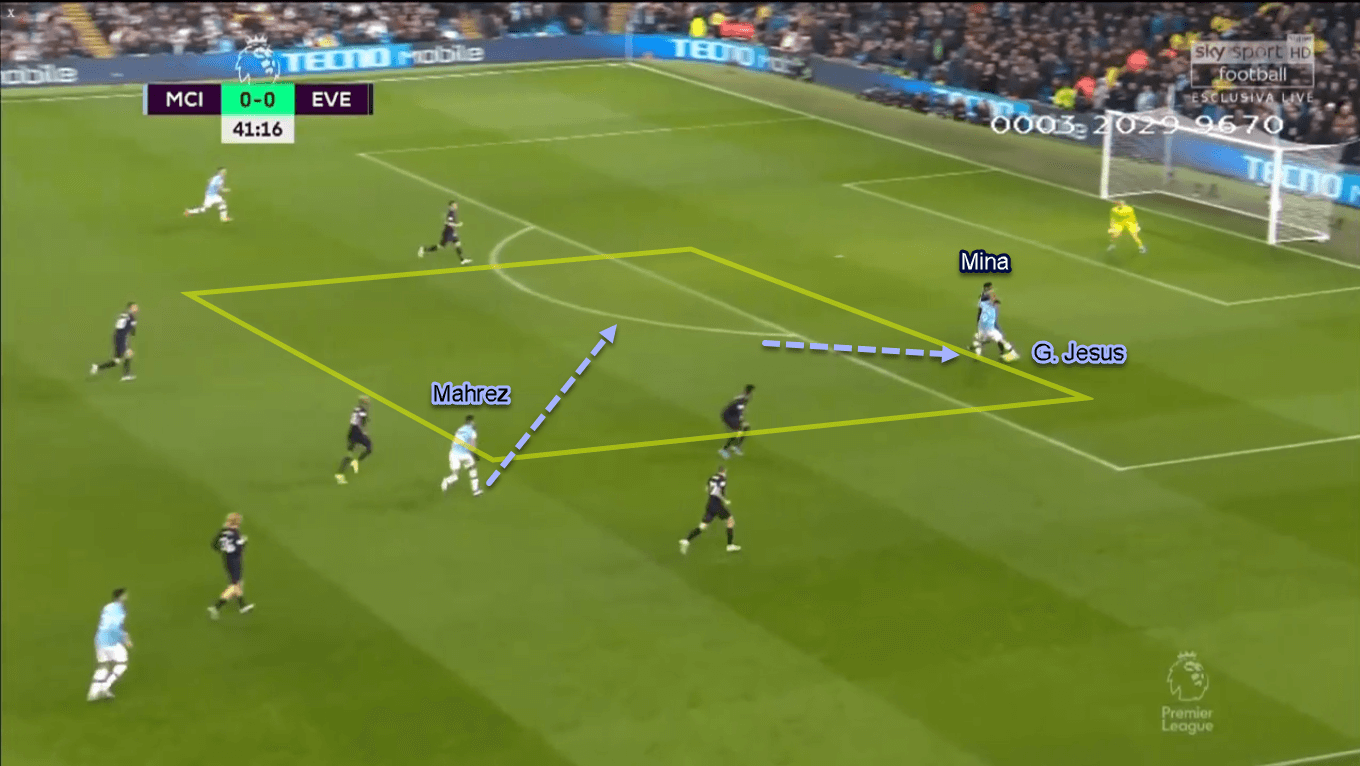
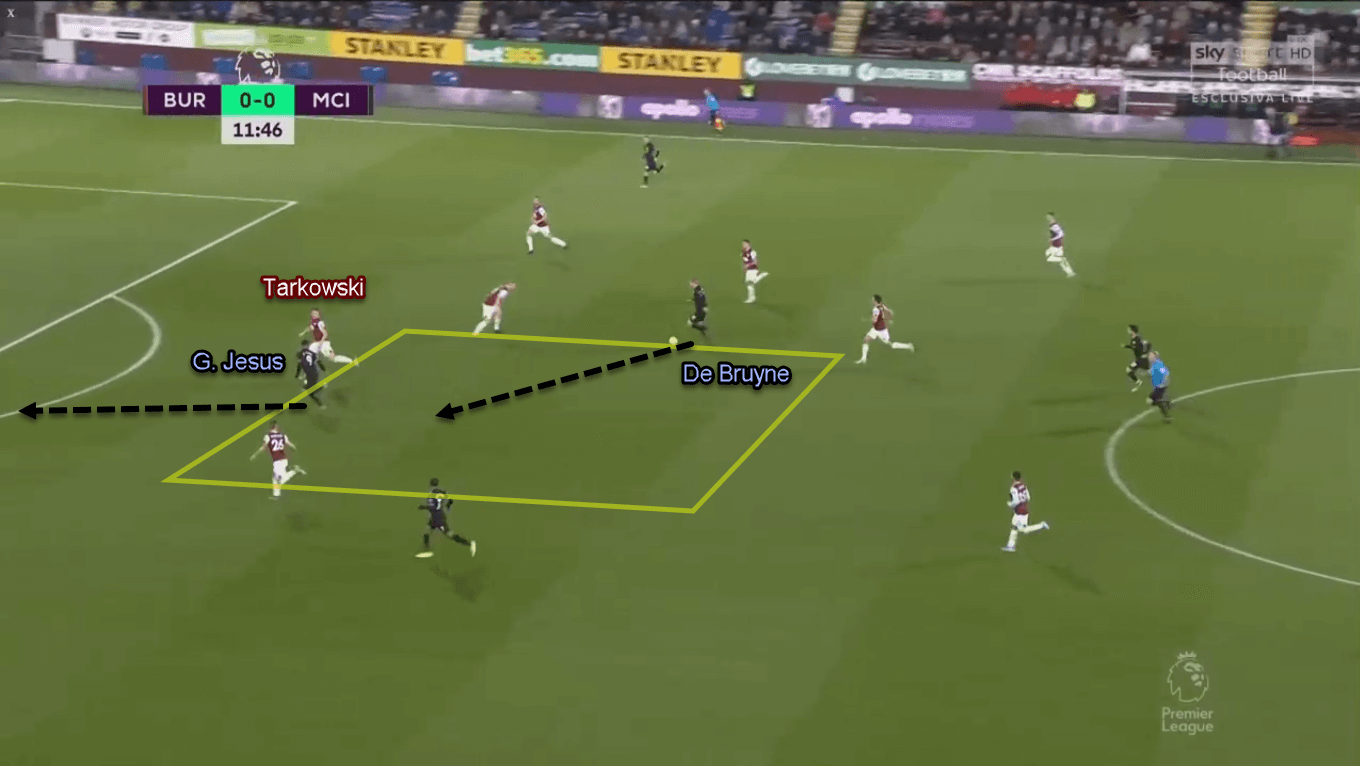
The 23-year-old also likes to drift into the half-space and make his runs between the opponents’ defenders.
He can do this easier when playing as a left-winger; due to his tendency to tuck inside.
One way to access him is by a diagonal ball from the other half-space.
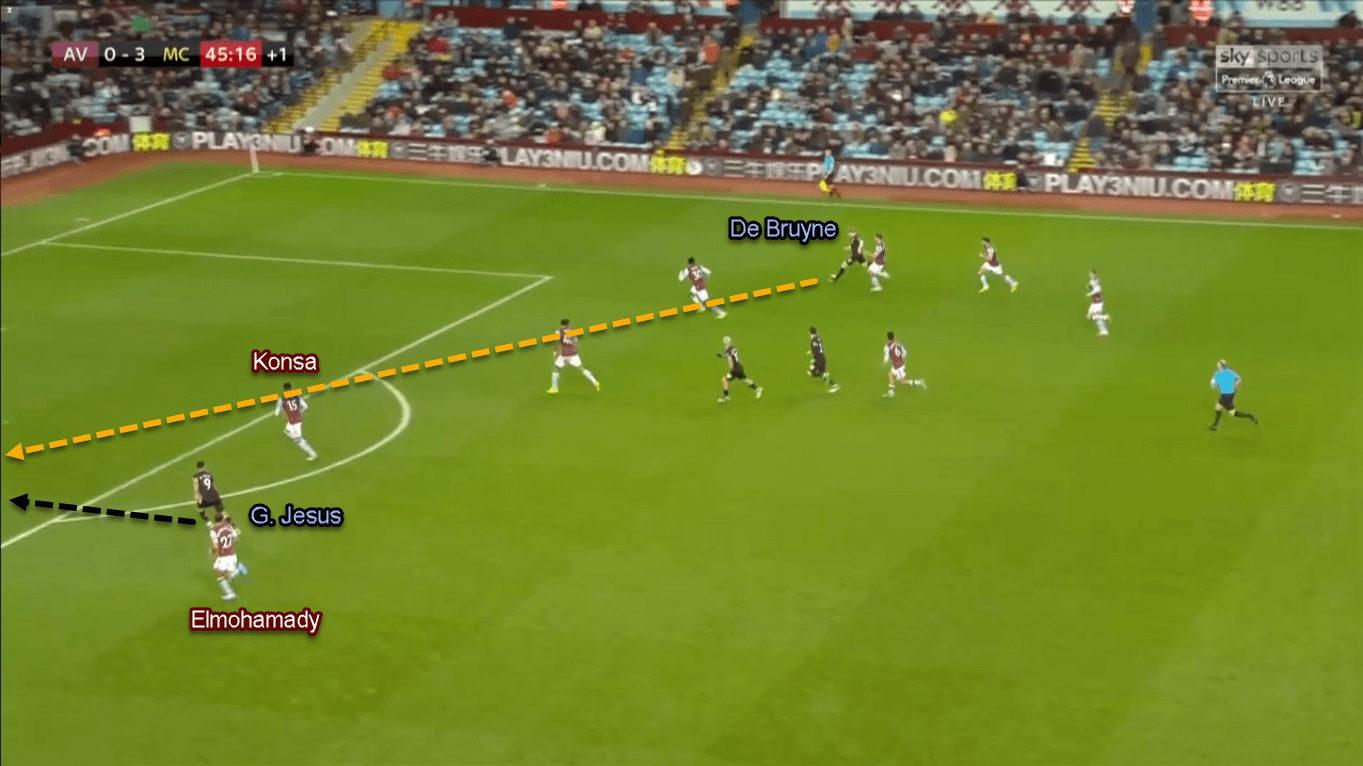
Gabriel Jesus Attacking tendencies (part two)
One of Guardiola’s offensive characteristics is giving his attackers to make one-touch finishes with relatively big expected goals (xG) numbers.
G. Jesus fits this system perfectly as he has brilliant off-the-ball movement to make such finishes.
The Brazilian’s main weapon is sharp runs to the far post.
However, G. Jesus executes this quite uniquely.
First, he would most likely start his run within the defender’s reach.
Either by physically touching the defender or standing very close to him, the 23-year-old rarely drifts far from his marker.
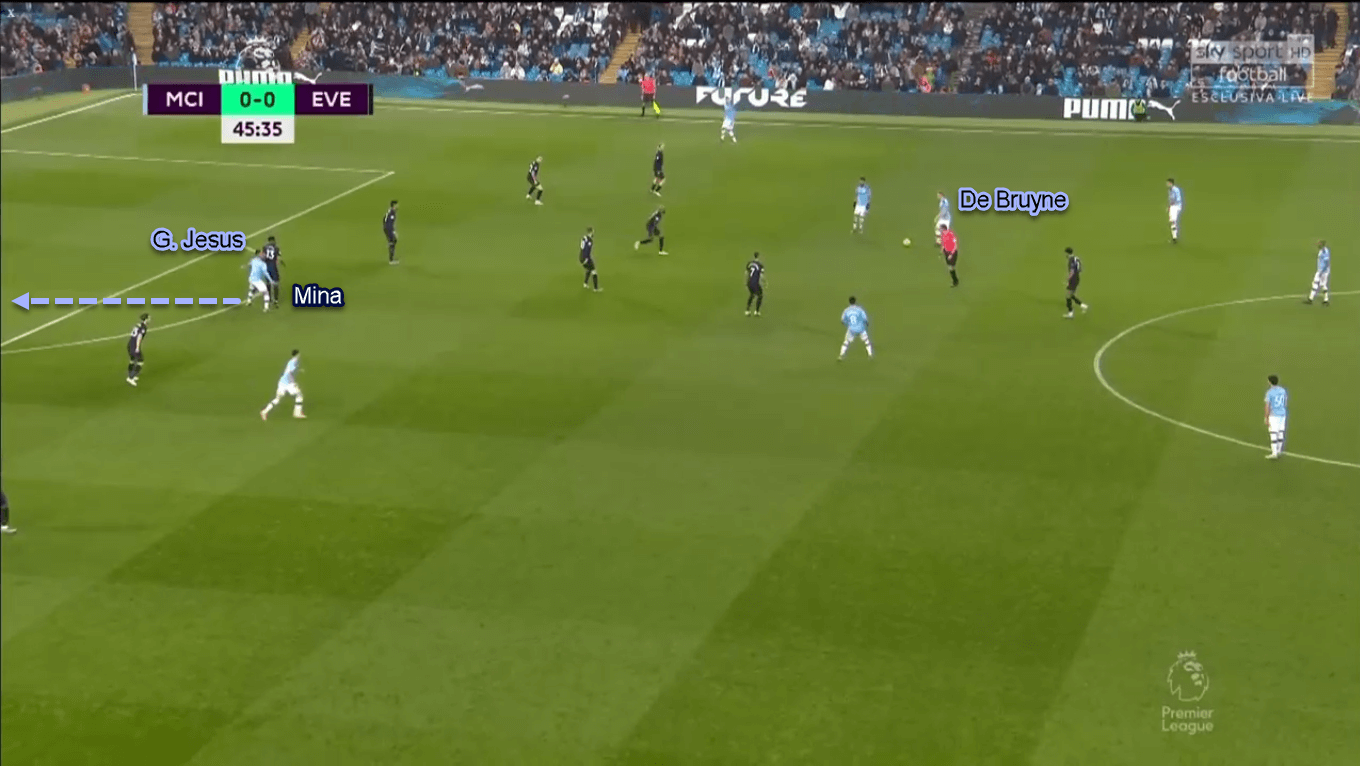
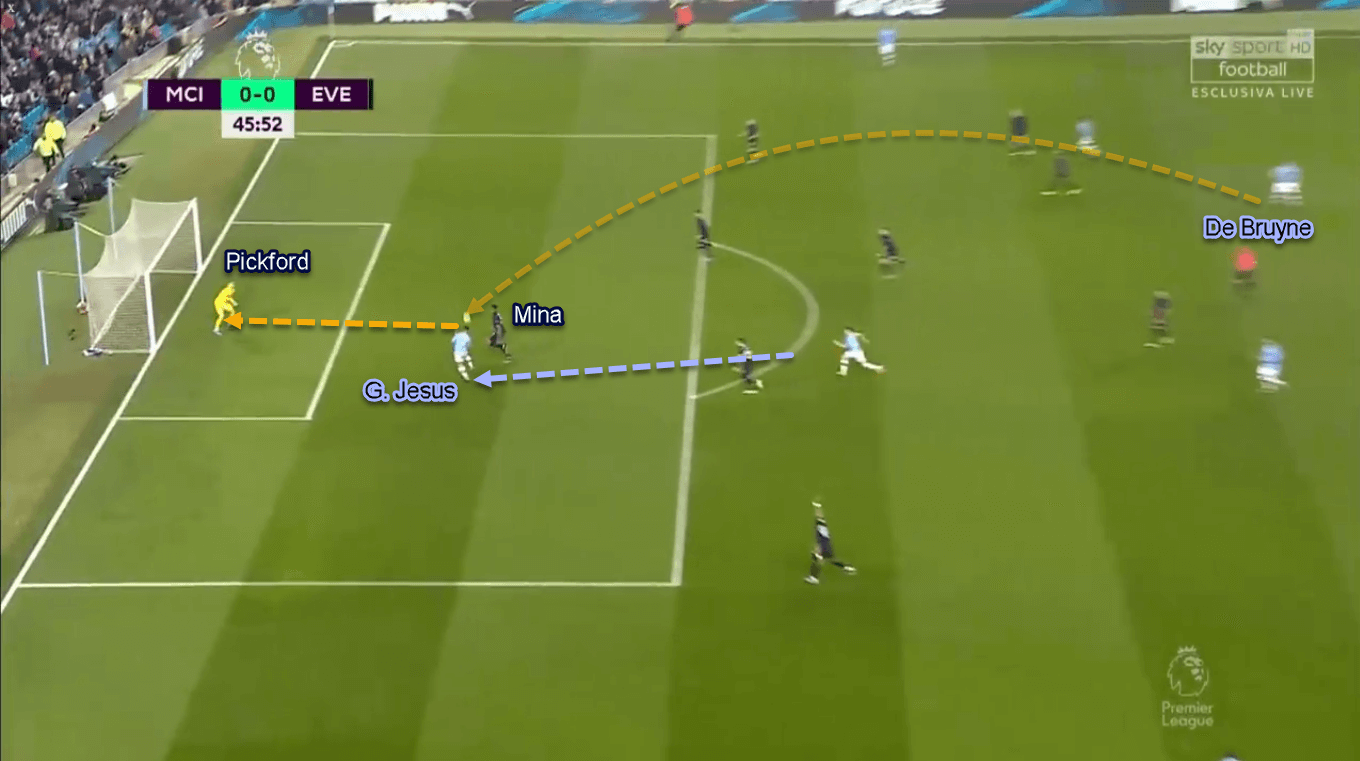
Then, he would burst quickly from the defender’s reach to the far post.
The far-post is probably chosen because it gives him the advantage to attack from his marker’s blind-spot.
He would use his superb acceleration to get free and attack the far-post area.
Sometimes, he would also curve his run to alter his approach.
Yet, the tendency stays the same: he would start the run within the defender’s reach.
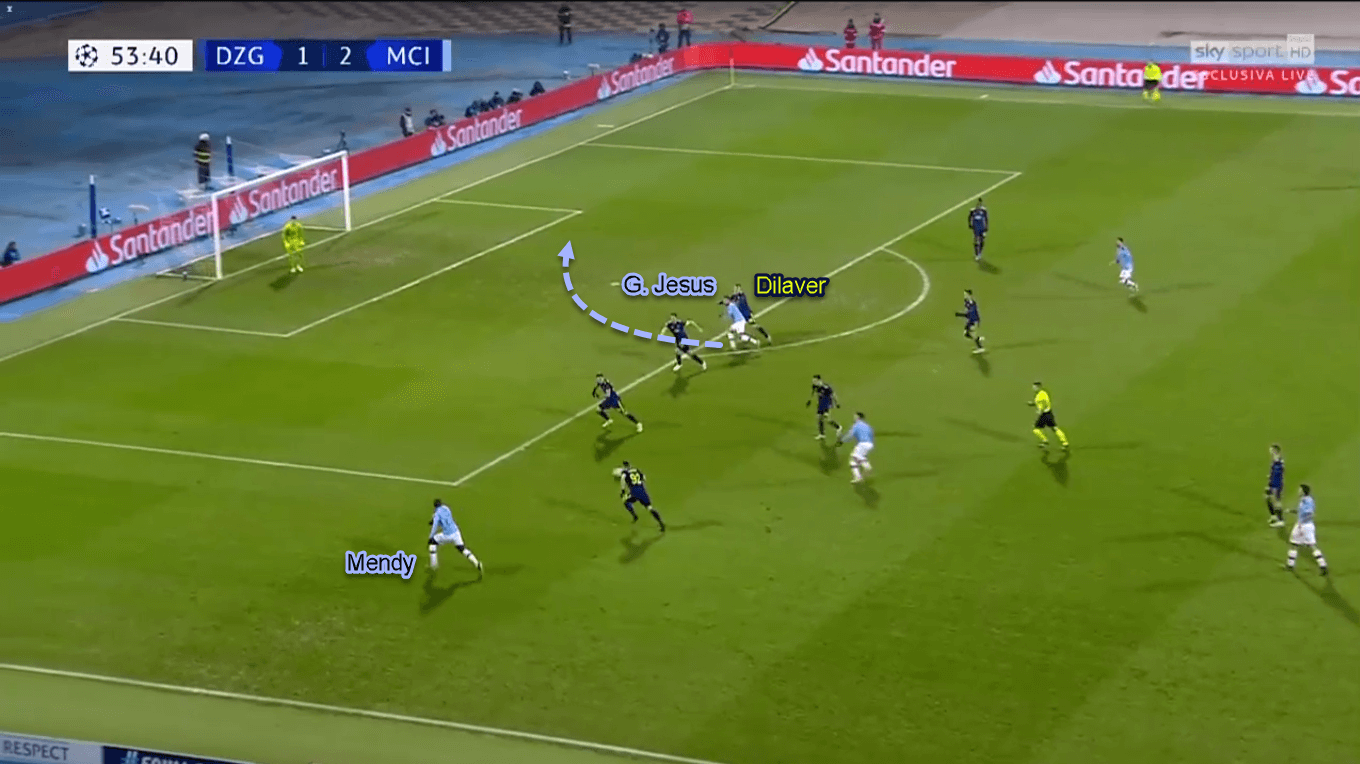
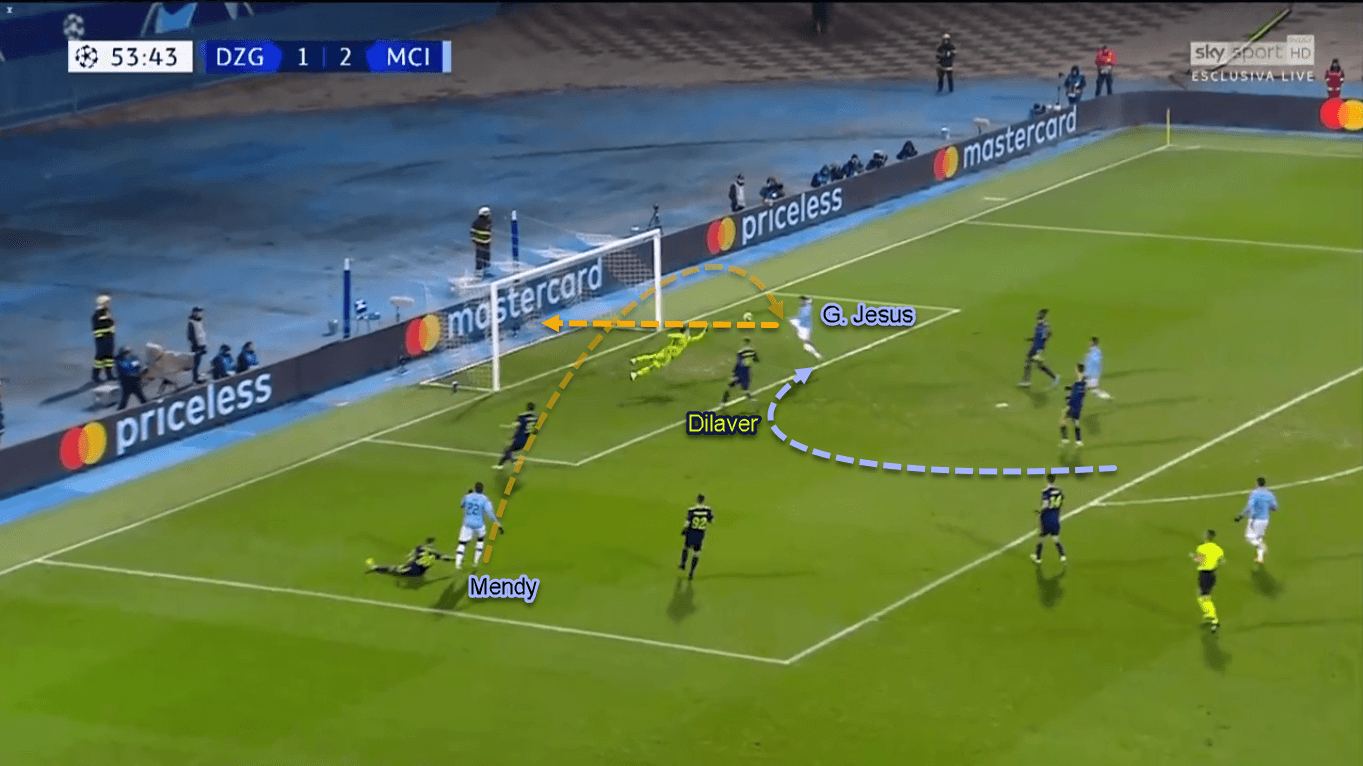
Another weapon G. Jesus uses is making runs to the goalmouth.
He would execute this by starting his run in between the opponents’ centre-backs and trying to finish the attack with a tap-in.
Again, such positioning is vital to provoke confusion for the defenders.
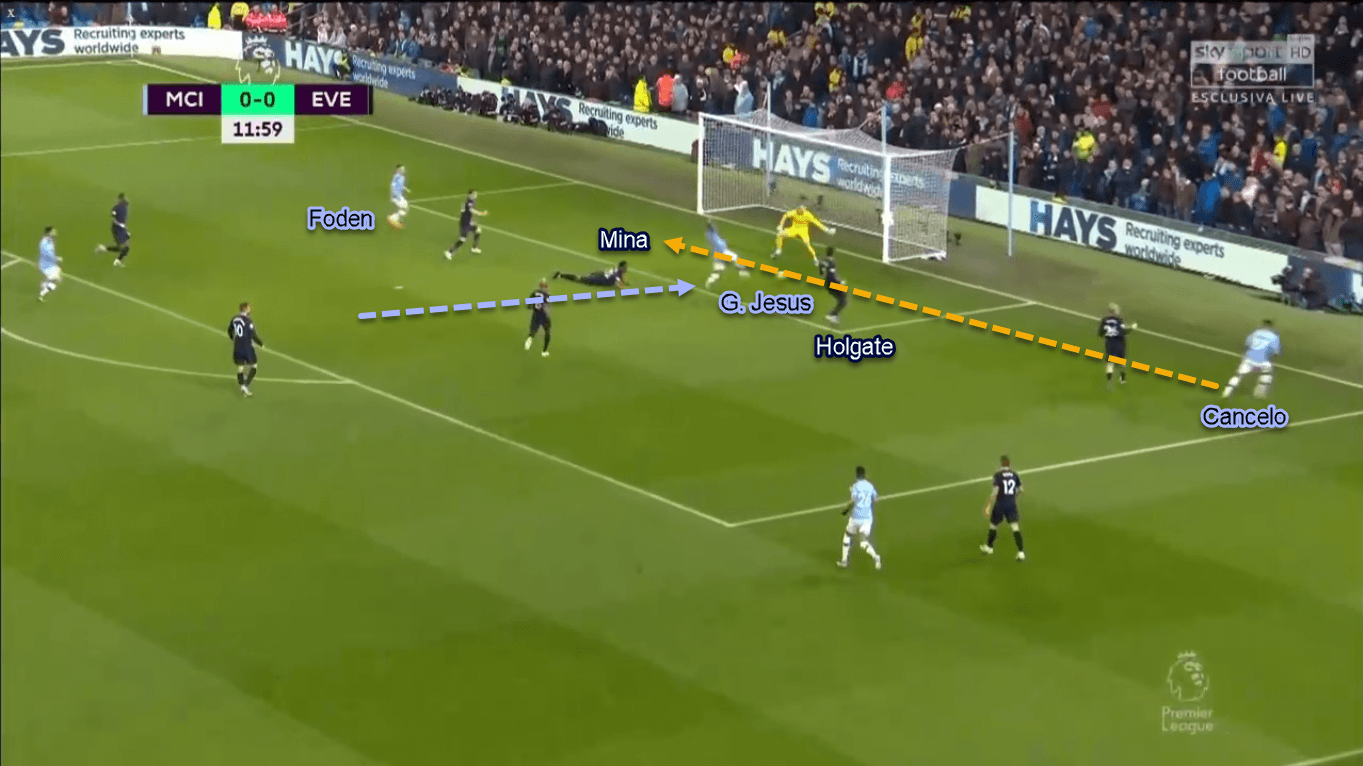
A soft touch for a deadly striker
G. Jesus has another weapon in his armoury: a sublime first touch.
This particular trait is beneficial both for him and his teammates.
First, this ability helps G. Jesus receives City midfielders’ hard passes with ease.
In the final third, this is useful for him to get into a shooting space easier.
He would often control the powerful pass and spins to face the goal with the same touch.
Such good control also helps him to shoot with just his second contact with the ball.
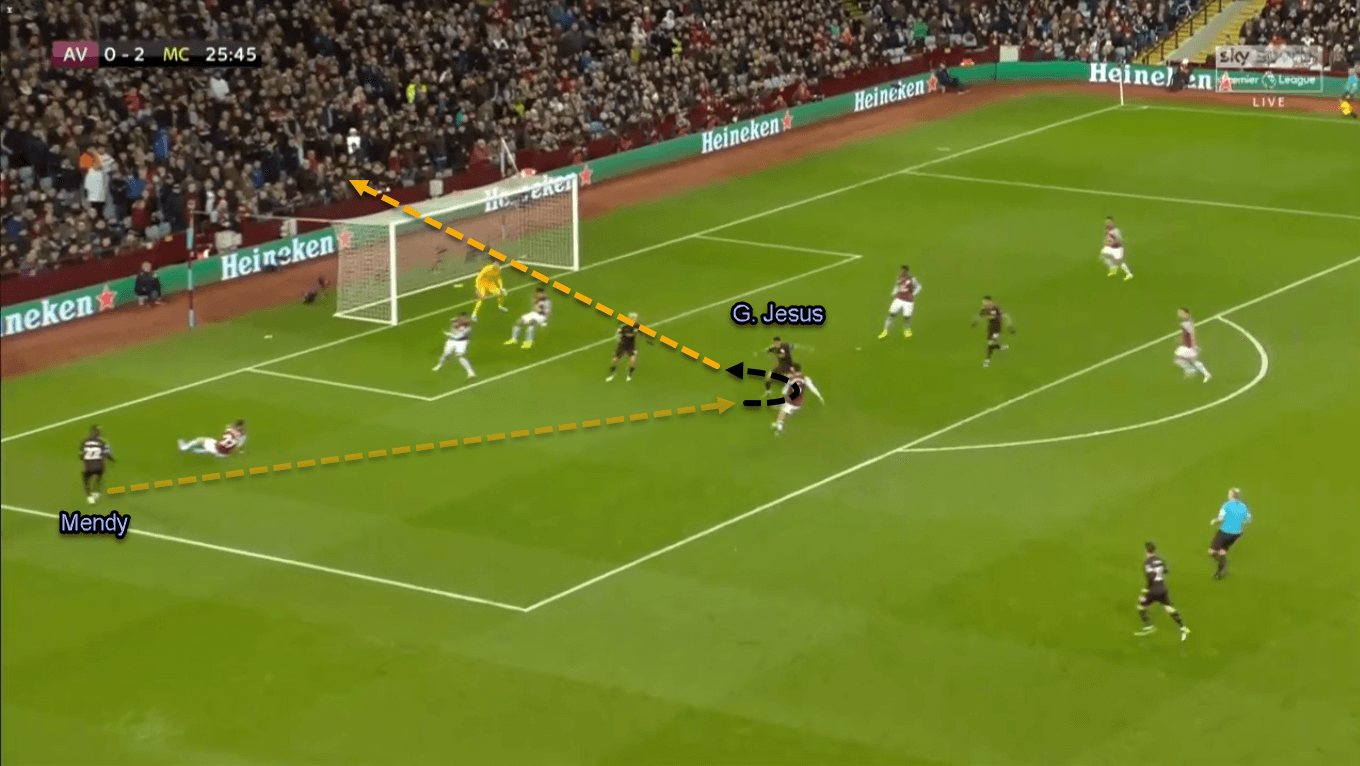
Second, G. Jesus’ brilliant control also helps him to execute his signature move.
That was a slight cut to the inside before slotting the ball home with a crisp curler.
Again, the first touch is important to give him a free yard of shooting space.
Not only that, but it would also force the defender to move in the wrong way due to their inability to keep up with the ball’s rapid shift.
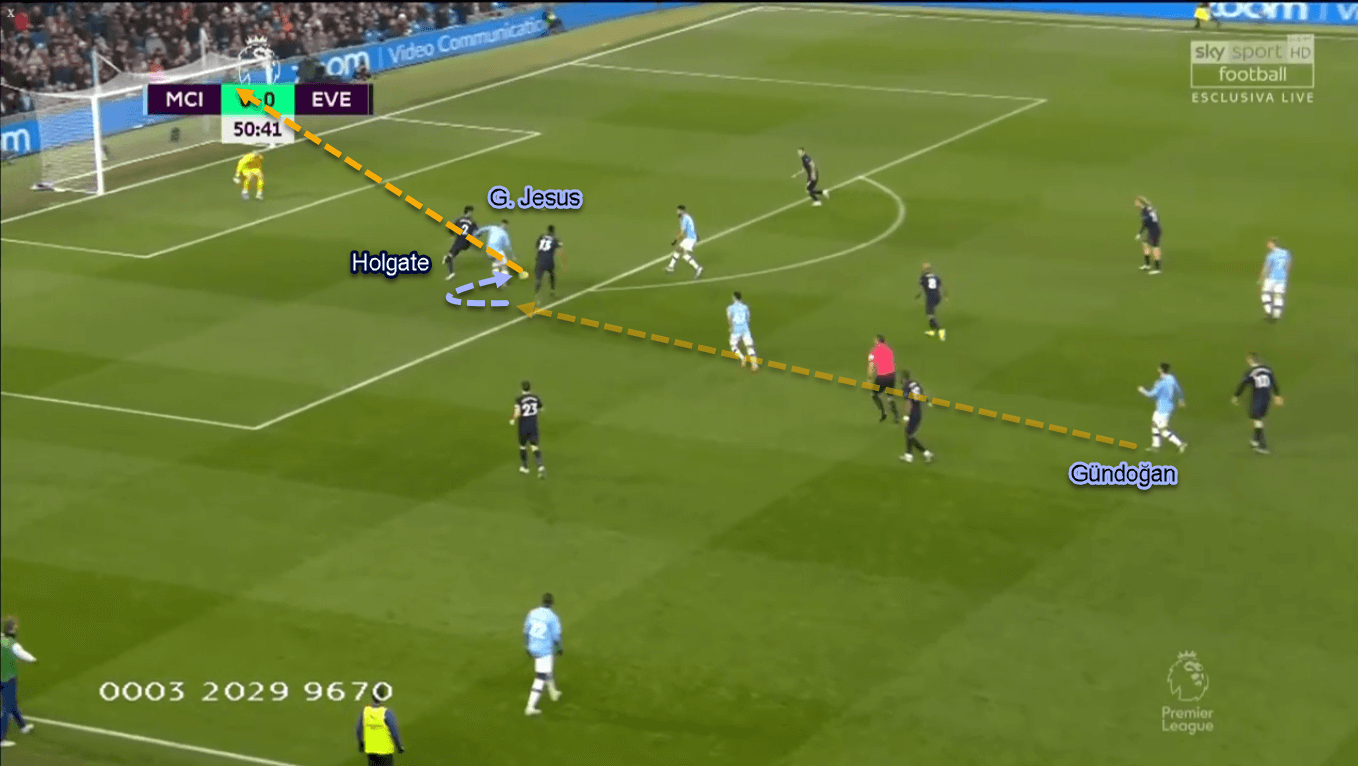
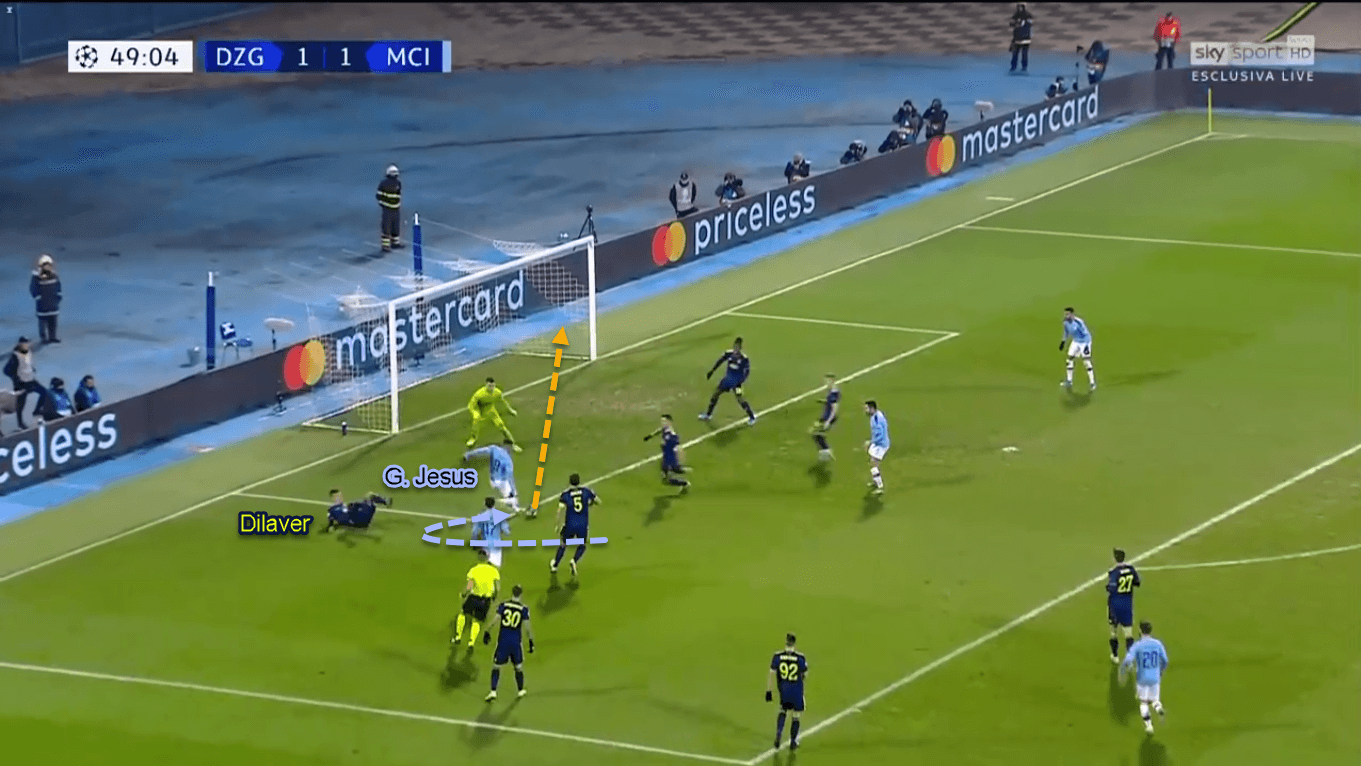
As mentioned previously, the Brazilian’s good first-touch can also be useful for his teammates.
With this trait, G. Jesus can win the ball and then keep it within his reach against multiple opponents.
Then, he can use his other foot to send it to one of his attacking comrades from a tight space.
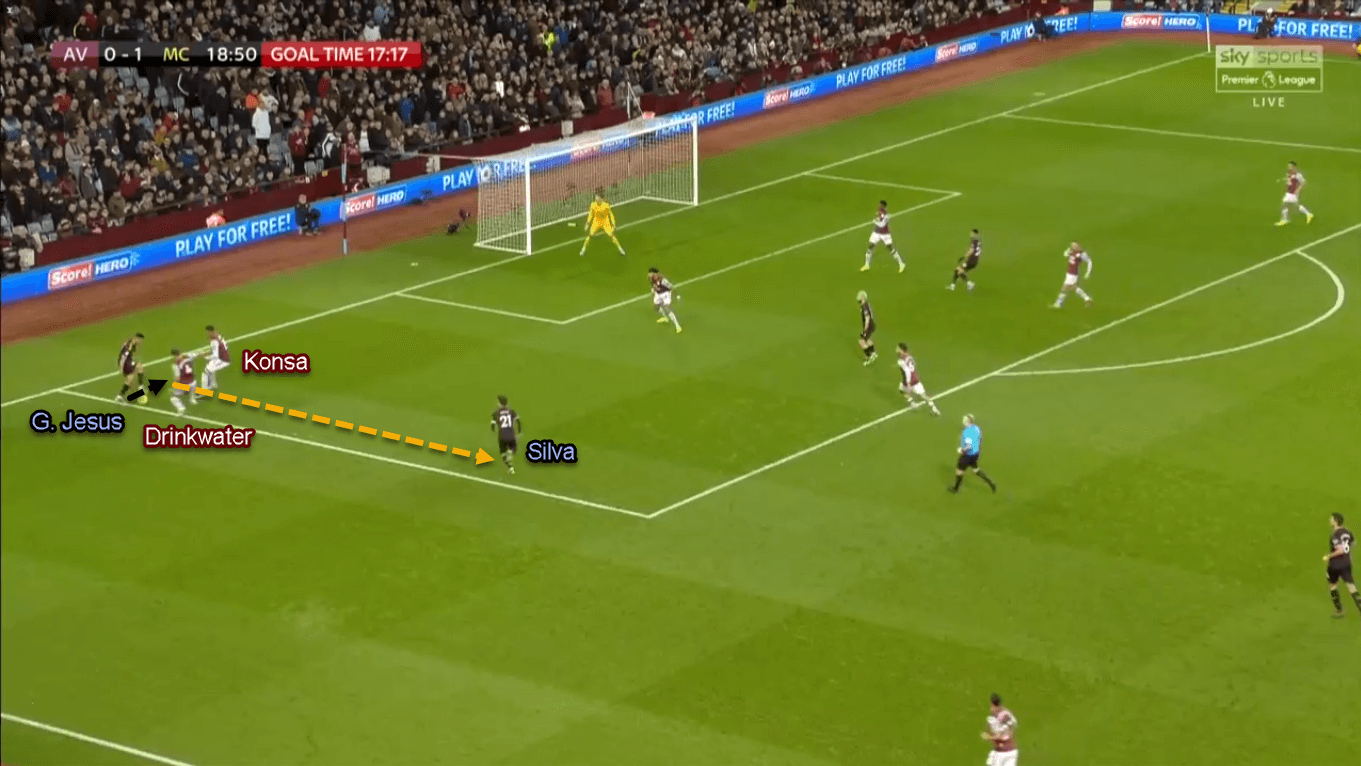
Gabriel Jesus – Aggressive when defending
Defensively, Guardiola often sets his team in a medium-high 4–1–2–3 shape.
They defend quite aggressively and quite often can be found pressing up to their opponents’ penalty box.
G. Jesus is positioned at the tip of the 4–1–2–3 as a striker.
His main task is to press the on-ball centre-back, limit his time on the ball, and force him to play wide.
However, his defensive task doesn’t stop there.
The Brazilian is also tasked to press the goalkeeper when the centre-back plays a backwards pass.
The objective behind this is to limit the goalie’s time with the ball and force him to play a direct pass.
In the process, G. Jesus doesn’t only close down the goalkeeper.
He would also close the defender he had just left with his cover shadow, thus preventing a return pass to the player.
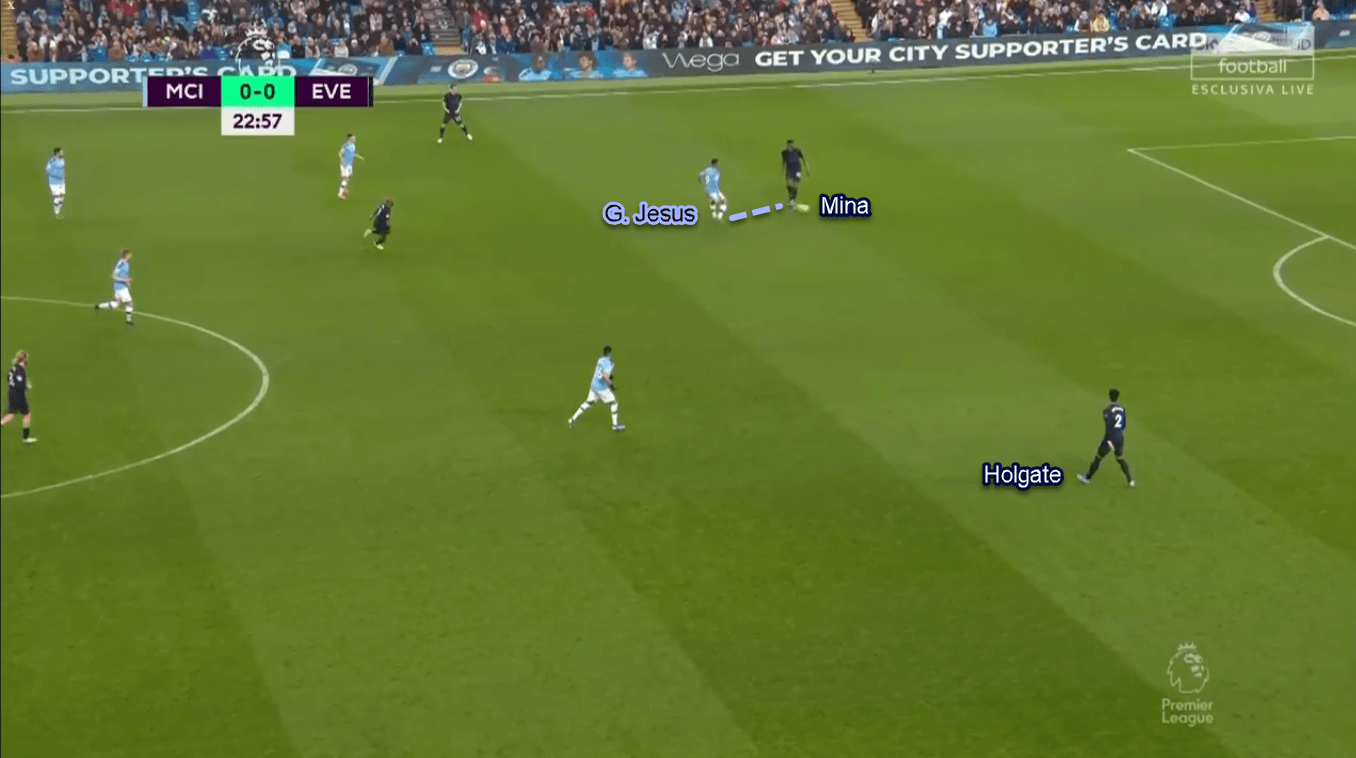
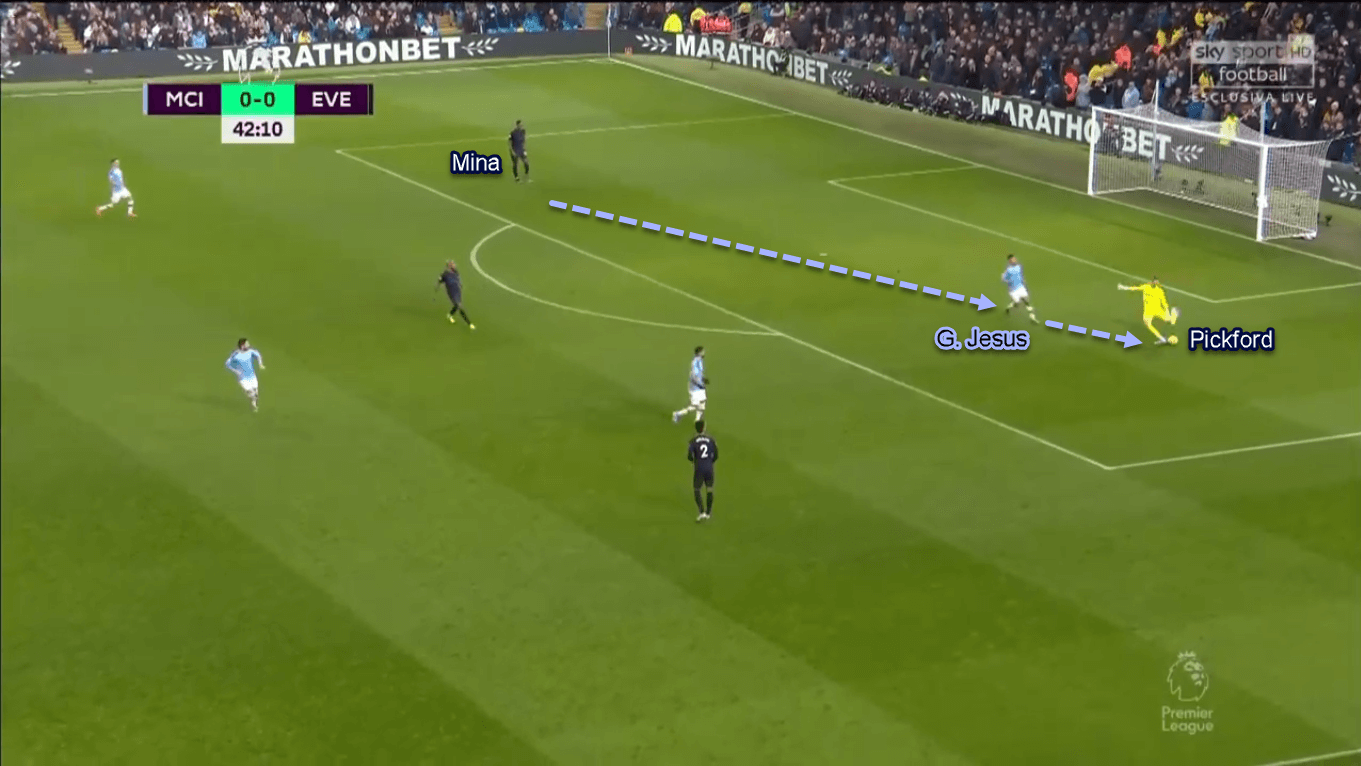
Gabriel Jesus Potential issues
As mentioned before in this analysis, the Brazilian likes to play on the shoulders of the defenders and make short sprints in behind the defensive line.
This particular type of playing needs good positioning as well as precise timing to execute the runs.
It seems that G. Jesus still needs to polish his ability on both facets, as he’s still quite offside-prone today.
The stats show that the Brazilian is caught offside 0.9 times per 90 minutes.
Among all players who have played at least 1,000 minutes this season, that tally is the joint-third highest in the Premier League.
For a fact, that achievement is even higher than the goal-hanging Jamie Vardy.
Looking at the stats, the 33-year-old striker has a slightly better achievement, with only 0.8 times caught offside per 90 minutes in the league.
We need to underline that Vardy is 10 years older than G. Jesus; thus relatively less explosive than him.
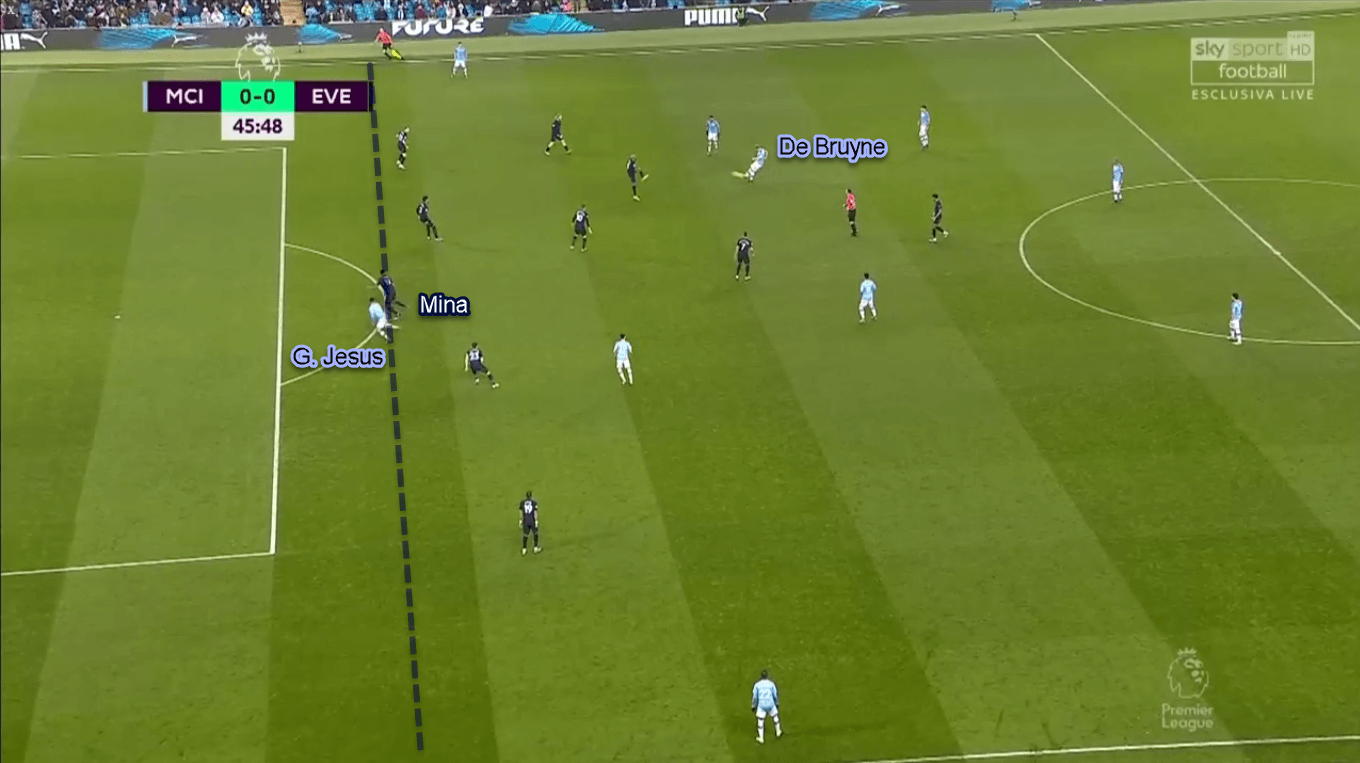
Another issue is that the Brazilian is not yet an elite goal-scorer like Agüero.
Per the statistics, G. Jesus has always performed below his league xG tally in the last three seasons.
Let’s rewind to 2017/18, where he scored 13 goals from a total of 15.37 xG.
In the next season, he only netted seven times from 12.62 xG.
In this campaign, he has only reached 10 goals from 14.48 xG.
One thing that supports this argument is his lack of ability to convert from the penalty spot.
Since he arrived at the Etihad Stadium, G.Jesus has taken eight penalties for the club.
However, he has only converted four (50%) times from all his opportunities
and missed all his penaltiesthis season.
Conclusion
G. Jesus is an explosive centre-forward who is very dangerous both on and off the ball.
His versatility is also a crucial weapon for City’s offensive tactics.
It’s unfair to compare his playing style with Agüero’s, as both men have different characteristics and tendencies.
One thing we can agree on is that he and Agüero are equally as important for Guardiola’s brand of football.
However, the manager needs to trust G. Jesus more and give him the minutes he deserves.
However, G. Jesus still has some areas that he can polish.
The most important thing is his positioning and timing for his runs.
He also needs to have more composure inside the box to be a world-class finisher like his veteran teammate.
Lucky for the Brazilian, he just turned 23 last April.
As the saying goes, the sky is the limit for him.





Comments